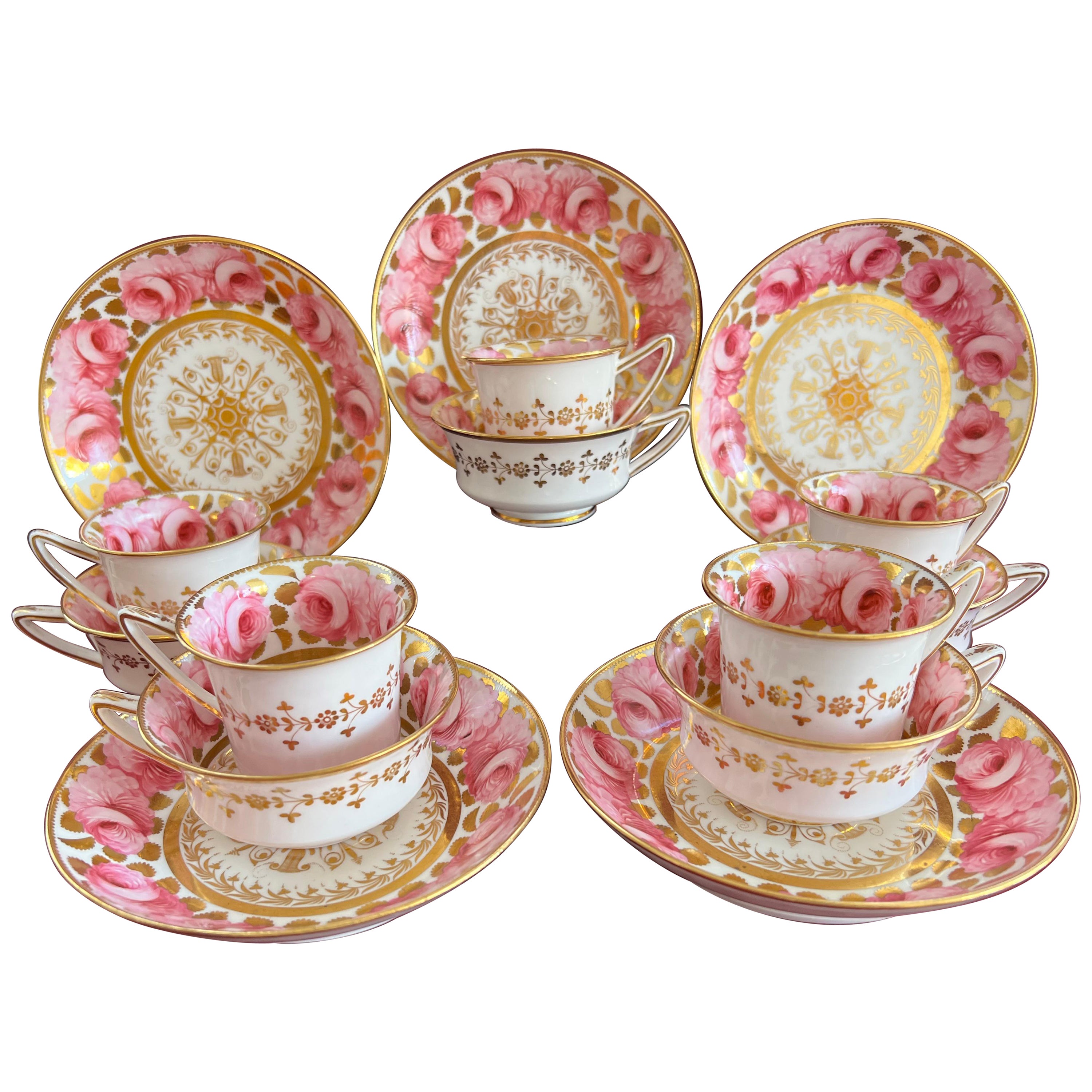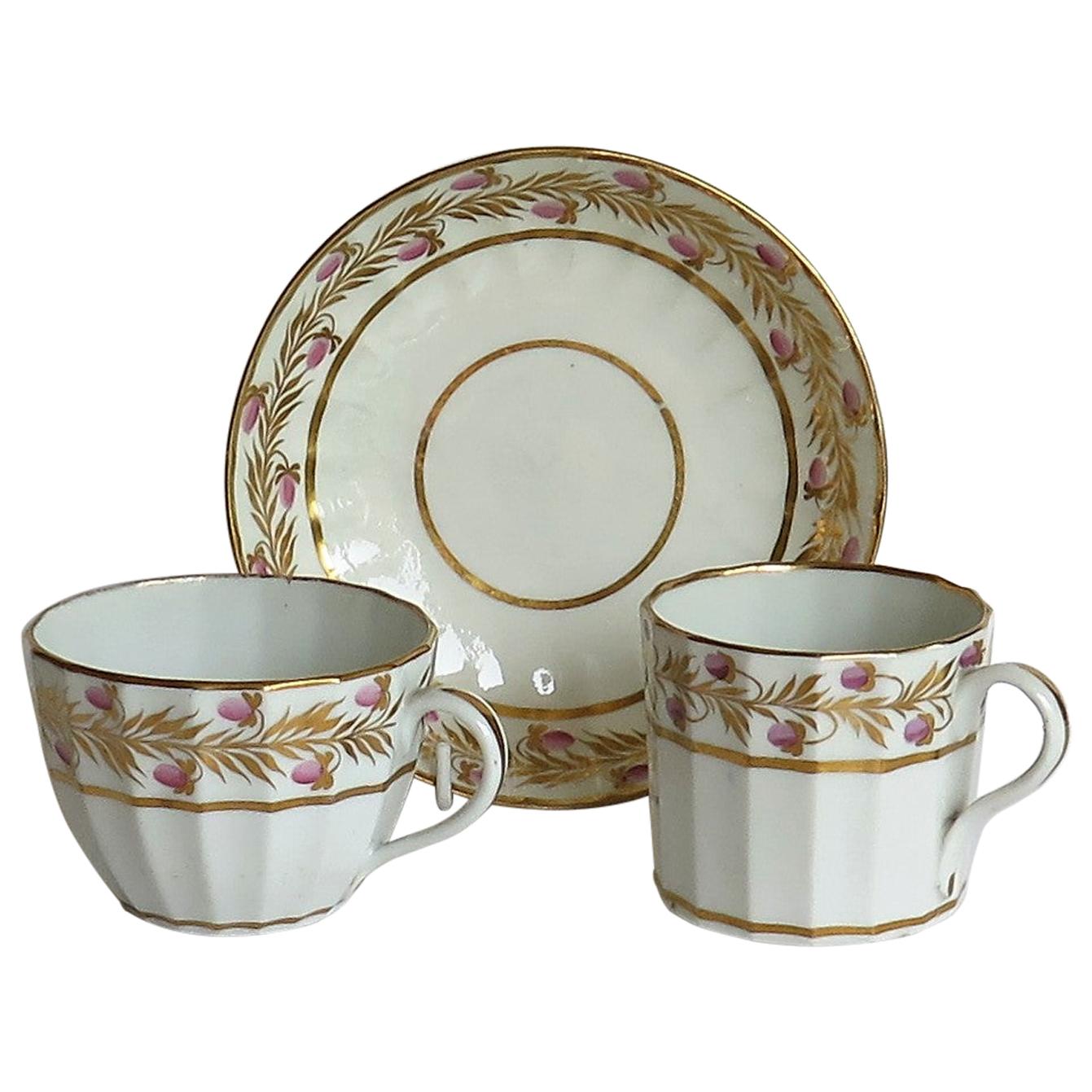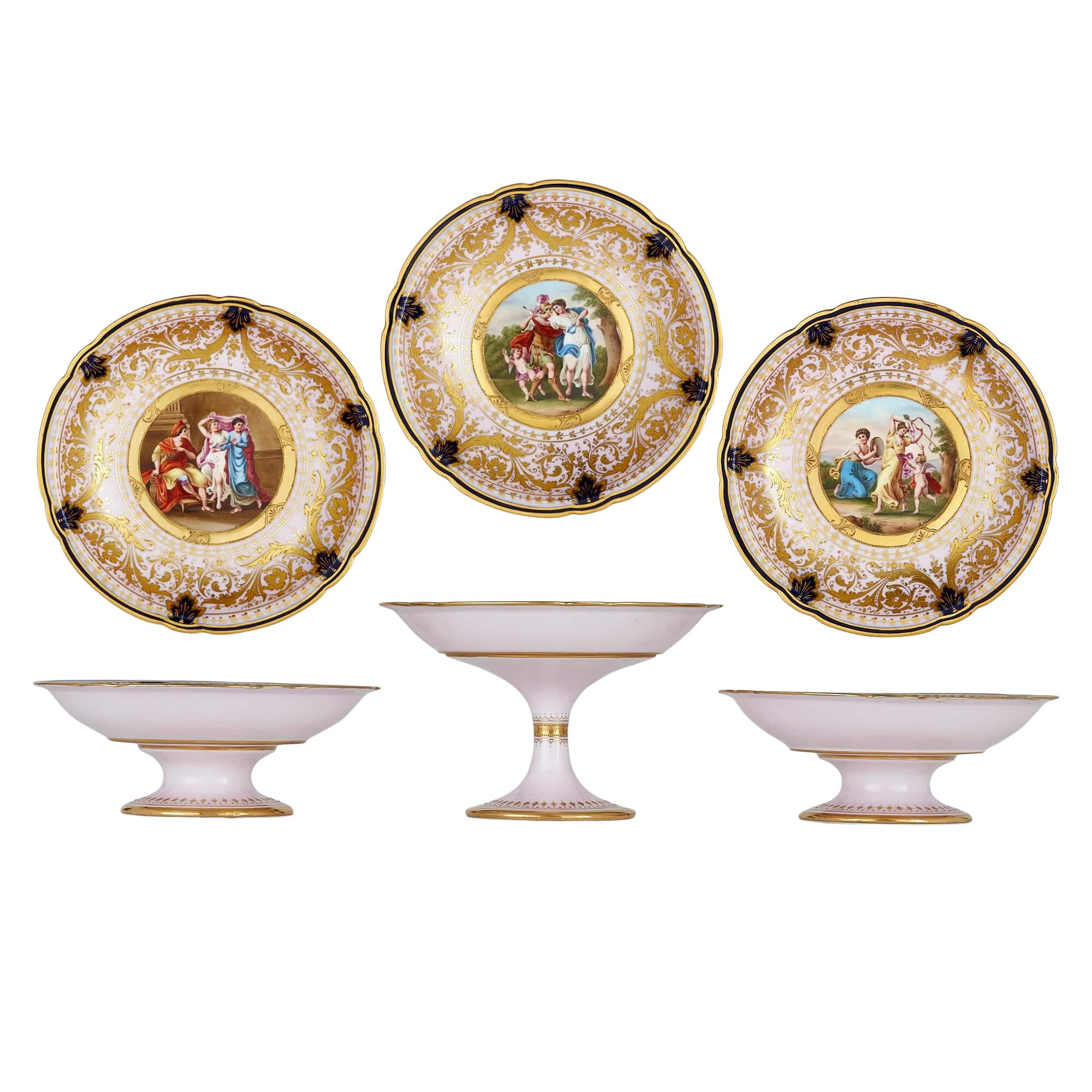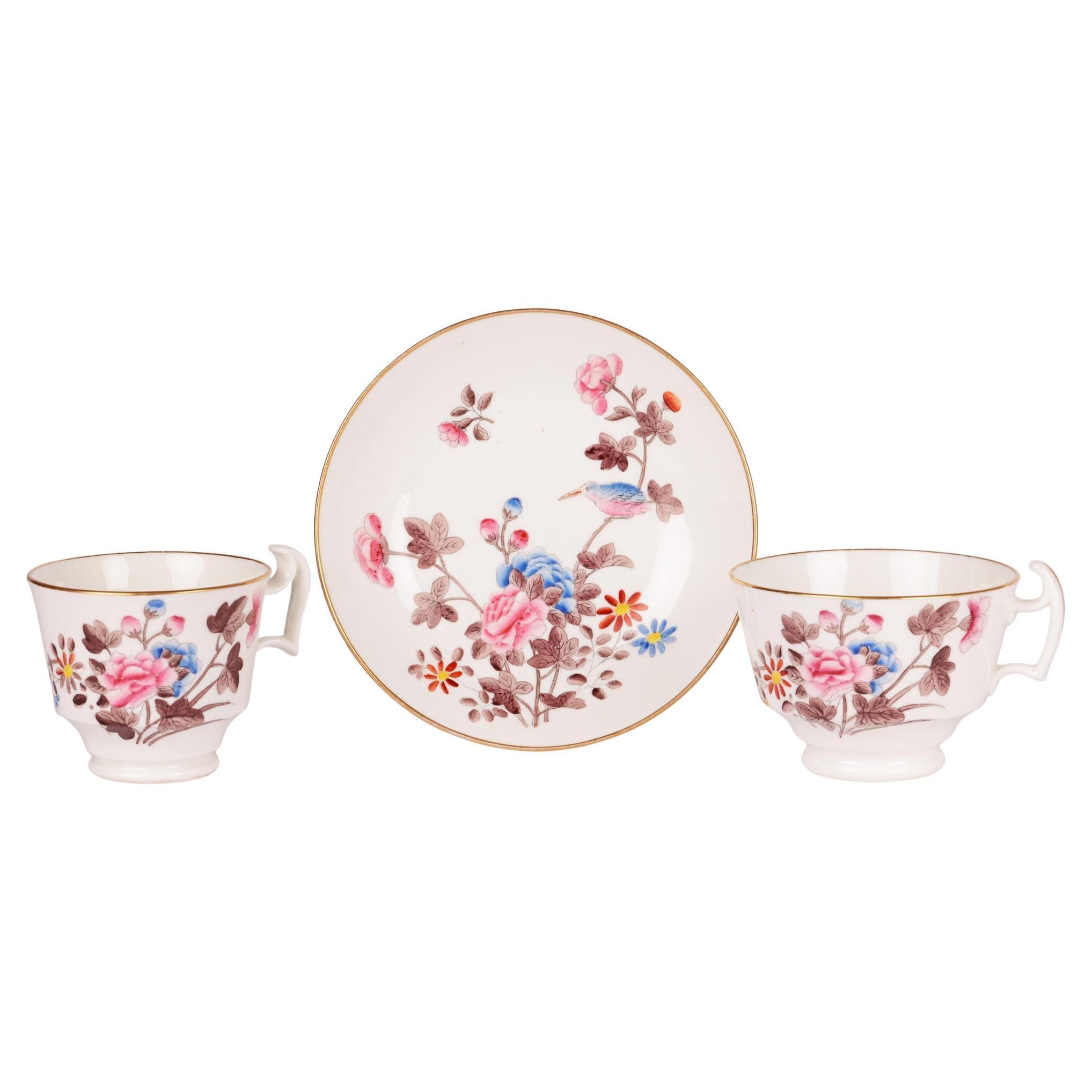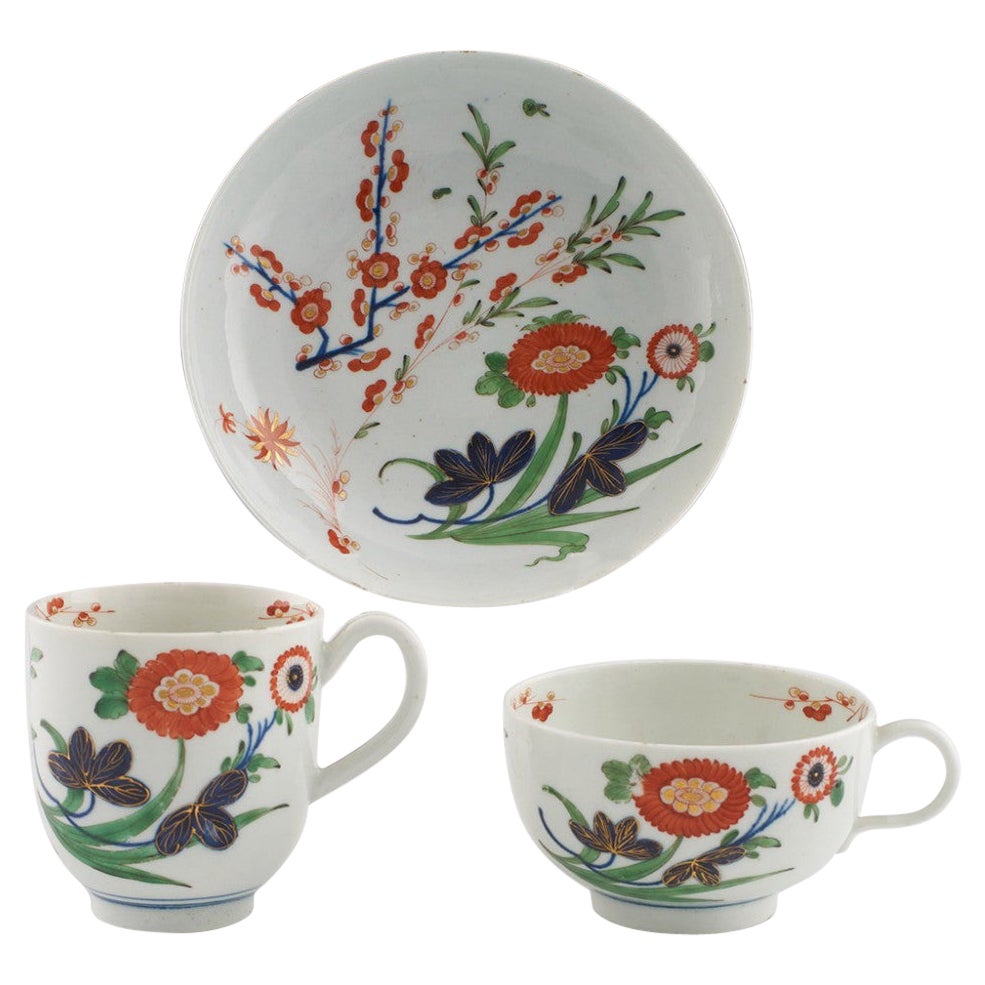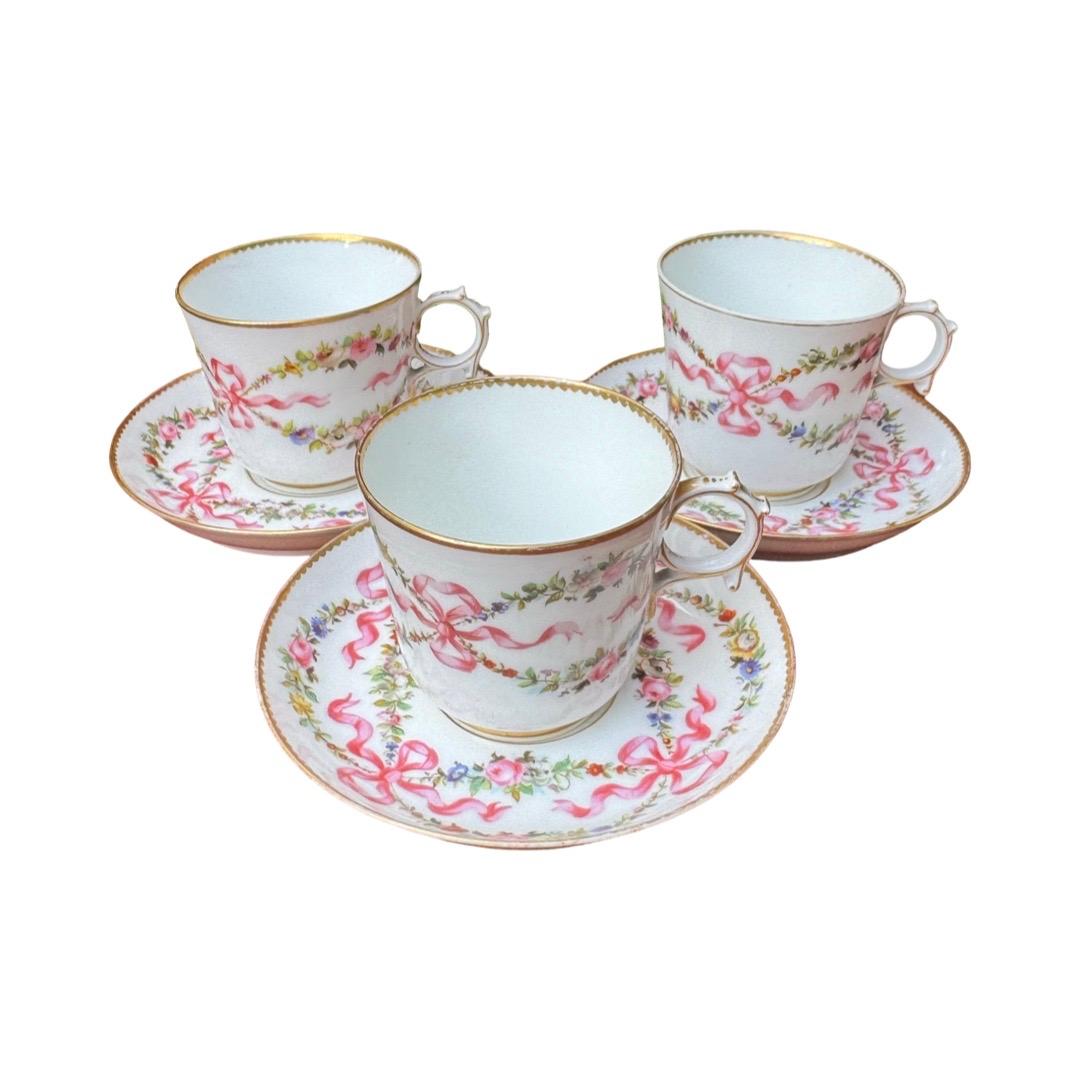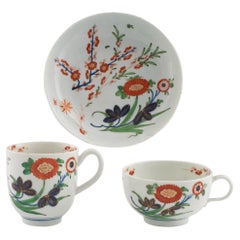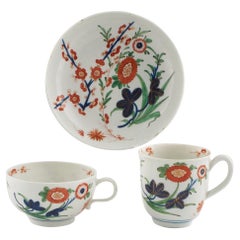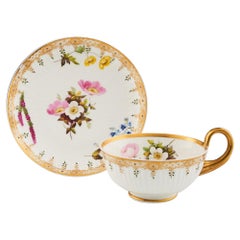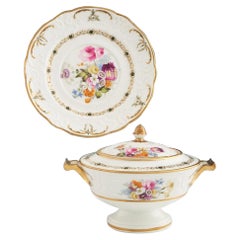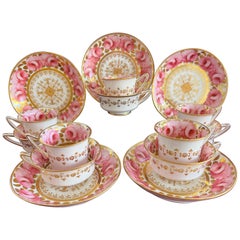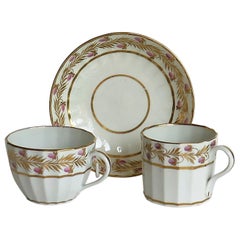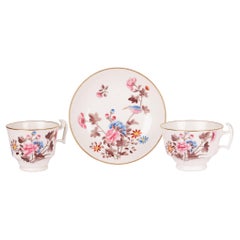Items Similar to Swansea Porcelain Trio c1818
Want more images or videos?
Request additional images or videos from the seller
1 of 9
Swansea Porcelain Trio c1818
$773.88
£565
€664.09
CA$1,068.45
A$1,184.53
CHF 622.52
MX$14,496.73
NOK 7,774.61
SEK 7,297.25
DKK 4,957.04
About the Item
Heading : Swansea Porcelain trio
Date : c1818
Period : Regency
Marks : Impressed SWANSEA mark to suacer
Origin : Swansea, Wales
Colour : Polychrome
Pattern : Typical swasnsea gilded rose design with pink and green enamels
Features: Gilt rims, incurved spur handles
Condition : Excellent, no chips or cracks - some wear to the gilding particularly the central ring of the saucer
Restoration : None
Dimensions : Saucer: 13.9cm diameter, 2.6cm height. Coffee cup: 5.7cm height, 7.6cm diameter. Teacup: 5.4cm height, 8.7cm diameter
Weight : 263 grams
- Creator:Swansea Porcelain (Maker)
- Dimensions:Height: 2.76 in (7 cm)Diameter: 5.48 in (13.9 cm)
- Style:Regency (Of the Period)
- Materials and Techniques:
- Place of Origin:
- Period:
- Date of Manufacture:1818
- Condition:Wear consistent with age and use.
- Seller Location:Tunbridge Wells, GB
- Reference Number:Seller: 231129091stDibs: LU8525237680422
About the Seller
5.0
Vetted Professional Seller
Every seller passes strict standards for authenticity and reliability
Established in 2014
1stDibs seller since 2023
85 sales on 1stDibs
Typical response time: 1 to 2 days
- ShippingRetrieving quote...Shipping from: Tunbridge Wells, United Kingdom
- Return Policy
Authenticity Guarantee
In the unlikely event there’s an issue with an item’s authenticity, contact us within 1 year for a full refund. DetailsMoney-Back Guarantee
If your item is not as described, is damaged in transit, or does not arrive, contact us within 7 days for a full refund. Details24-Hour Cancellation
You have a 24-hour grace period in which to reconsider your purchase, with no questions asked.Vetted Professional Sellers
Our world-class sellers must adhere to strict standards for service and quality, maintaining the integrity of our listings.Price-Match Guarantee
If you find that a seller listed the same item for a lower price elsewhere, we’ll match it.Trusted Global Delivery
Our best-in-class carrier network provides specialized shipping options worldwide, including custom delivery.More From This Seller
View AllFirst Period Worcester Porcelain Kempthorne Pattern Trio c1770
By 1st Period Worcester Dr. Wall
Located in Tunbridge Wells, GB
Heading : First Period Worcester porcelain Kempthorne pattern trio
Date : c1770
Period : George III
Marks : Pseudo fret
Origin : Worcester, England
Colour : Polychrome - imari
Patte...
Category
Antique 1770s British George III Porcelain
Materials
Porcelain
First Period Worcester Porcelain Kempthorne Pattern Trio c1770
By 1st Period Worcester Dr. Wall
Located in Tunbridge Wells, GB
Heading : First Period Worceste rporcelain Kempthorne pattern trio
Date : c1770
Period : George III
Marks : Pseudo fret
Origin : Worcester, England
Colour : Polychrome - imari
Patte...
Category
Antique 1770s British George III Porcelain
Materials
Porcelain
Swansea Porcelain Fluted Breakfast Cup and Saucer, c1816
By Swansea Porcelain
Located in Tunbridge Wells, GB
Swansea Porcelain Fluted Breakfast Cup and Saucer, c1816
Additional information:
Date : c1816
Period : George III
Marks : None
Origin : Swansea, Wales
C...
Category
Antique 19th Century English George III Porcelain
Materials
Porcelain
A Stunning Swansea Porcelain Sauce Tureen, Cover and Stand, c1820
By Swansea Porcelain
Located in Tunbridge Wells, GB
A Stunning Swansea Porcelain Sauce Tureen, Cover and Stand, c1820
Ex-Leslie Joseph Collection. One of the finest exampoles that we have seen and the first we have offered for sale w...
Category
Antique 19th Century English George IV Soup Tureens
Materials
Porcelain
A Fine Swansea Porcelain Oval Dish, c1820
By Swansea Porcelain
Located in Tunbridge Wells, GB
A Fine Swansea Porcelain Oval Dish, c1820
Additional information:
Date : c1820
Period : George IV
Marks : Red capitalised Swansea mark as shown. Label for Leslie Joseph collection
O...
Category
Antique 19th Century English George IV Porcelain
Materials
Porcelain
A Swansea Porcelain Oval Dish, c1820
By Swansea Porcelain
Located in Tunbridge Wells, GB
A Swansea Porcelain Oval Dish, c1820
Additional information:
Date : c1820
Period : George IV
Marks : Unmarked. Label for Leslie Joseph collection
Origin : Wales
Colour : Polychrome
...
Category
Antique 19th Century English George IV Porcelain
Materials
Porcelain
You May Also Like
Five Spode Porcelain Trio's Decorated in Pattern 3614, circa 1822
By Josiah Spode
Located in Exeter, GB
Five wonderful Spode Etruscan shape trios circa 1822. Each cup and saucer is finely decorated in Spode’s pattern 3614 with finely painted English Cabbage roses and embellished with r...
Category
Antique 19th Century British Porcelain
Materials
Porcelain
$3,816 Sale Price / set
20% Off
Georgian Coalport Porcelain Trio Hand Painted and Gilded, circa 1790-1800
By Coalport Porcelain
Located in Lincoln, Lincolnshire
This is an early porcelain trio comprising a vertically fluted coffee can, tea cup and saucer, all in a hand painted and gilded pattern, which we attri...
Category
Antique Late 18th Century English Georgian Ceramics
Materials
Porcelain
Set of Three Porcelain Tazze by Royal Vienna
By Royal Vienna Porcelain
Located in London, GB
Set of three porcelain tazze by Royal Vienna
Austrian, early 20th century
Larger tazza: Height 15cm, diameter 34cm
Smaller tazze: Height 9cm, diameter 3...
Category
Early 20th Century Austrian Neoclassical Porcelain
Materials
Porcelain
$4,793 / set
Swansea Welsh Porcelain Kingfisher Pattern Cabinet Trio
By Swansea Porcelain
Located in Bishop's Stortford, Hertfordshire
A fine antique Welsh porcelain cabinet trio decorated in the Kingfisher pattern by sought after maker Swansea and dating from around 1820. The trio comprises of a teacup, a coffee cu...
Category
Antique 1820s Welsh George III Tea Sets
Materials
Porcelain
Set of 3 Sèvres Porcelain Cups & Saucers “Marie-Antoinette”, c.1900
By Manufacture Nationale de Sèvres
Located in CANNES, FR
A rare and refined set of three porcelain cups and saucers from the prestigious Sèvres manufactory, dating to around 1900. Decorated in the iconic “Marie-Antoinette” pattern, this se...
Category
Early 20th Century French Rococo Revival Porcelain
Materials
Porcelain
Vintage Regency Limoges Swag China - Set of 30
Located in West Palm Beach, FL
This exquisite 30-piece Limoges china set showcases timeless Regency-era elegance with its delicate floral swag motifs, intricate gold trim, and scalloped edges. The fine porcelain c...
Category
Mid-20th Century French Regency Porcelain
Materials
Porcelain
$1,200 / set
More Ways To Browse
Silver Spurs
Antique Teacups And Saucers
Regency Cup And Saucer
Antique Furniture Swansea
Blue Hungarian Porcelain
Limoges France Bowl
Royal Copenhagen Antique Plates
19th Century Limoges Plates
Cobalt Gilt Plates Porcelain
Compote Set
Dresden Set
Hand Painted Oyster Plates
Sprig Plate
Flight Barr And Barr Porcelain
Flight Barr And Barr
Flight Barr Barr
Limoges Saucer
Ridgway England
